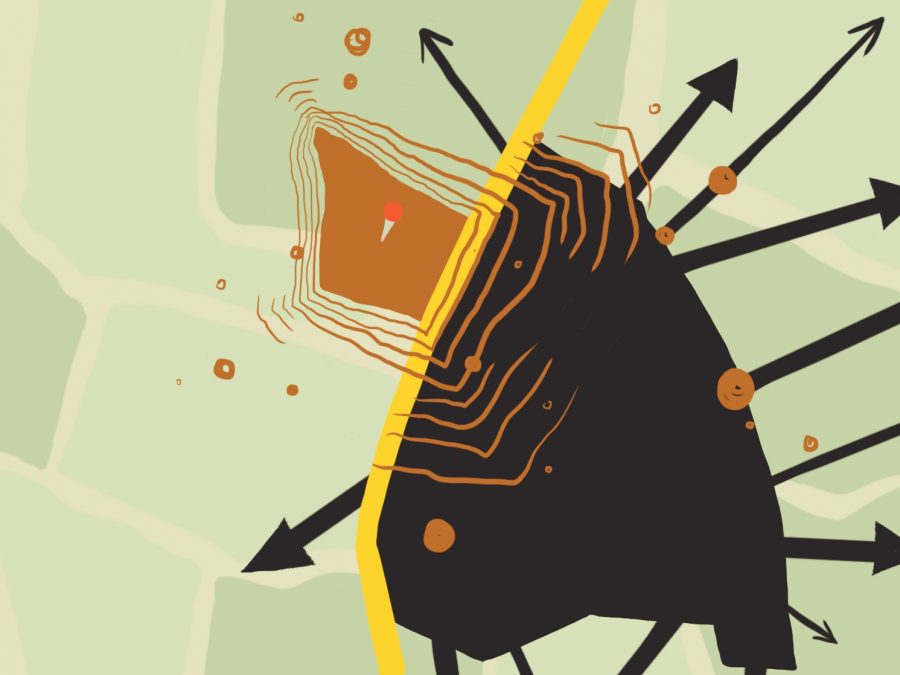Imagine growing up in a neighborhood your whole life. You consider it home. You know the kind neighbors, the best take out restaurants, and which streets to avoid after 10. Then your neighborhood is struck by a nuke, forever blasted into another galaxy. Except it’s not a nuke. It’s the sociopathic greed of speculative real estate development.
Gentrification is the process by which investment into an urban community rapidly increases the property value, displacing many of the existing residents. Rents turn unaffordable, restaurants too expensive and cherished cultural institutions are crowded out by yoga studios and luxury condos. In a state that prohibits rent control laws and withholds adequate public housing, gentrification often represents the death knell of long-standing communities.
Today, East Austin is rapidly gentrifying. In a 2019 report, a section of East Austin ranked fourth in a list of most quickly gentrifying neighborhoods in the country. As real estate moguls expand investment opportunities and upper class workers move into trendy neighborhoods promising short downtown commutes, many residents fear for their futures.
East Austin’s contemporary gentrification cannot be understood in a vacuum — it is an offspring of past institutional policy. In 1928, the City embraced a master plan that quarantined access to public services for blacks, such as education, employment, and medical treatment, to exclusively East Austin. Likewise, racially restrictive covenants banning non-whites from housing forced many black families to resettle east. The policy codified into law systematic, racial apartheid. It’s no surprise that Austin is one of the most economically segregated cities in the country.
As one might predict, the East “blackened.” Chronic underinvestment and institutional disenfranchisement driven by anti-black policies concentrated poverty, deprived communities of economic opportunities and deteriorated the social and housing conditions.
According to Eliot Tretter in “Shadows of a Sunbelt City: The Environment, Racism, and the Knowledge Economy in Austin,” in the 1940-’60s UT faced immense pressures to expand operations and compete to become a nationally prestigious university fit for the postindustrial knowledge economy. Demand for enrollment had tripled, yet UT didn’t have the physical facilities necessary to accommodate students and attract faculty. They needed more land for housing, sports facilities, research centers, classrooms, administrative offices. They decided to move east.
Tretter cited a 1984 Austin Statesman article by James Pinkerton that explained how as a result of UT’s urban renewal projects, “approximately one thousand people were displaced, mostly African Americans, and countless business, many African American-owned, were forced to close” without sufficient — or sometimes any — relocation funds.
The forced expulsion of communities from their land and their bitter and unending lawsuits reflect the violent externalities of UT’s growth, violence carved into the very heart of its success. It was in part due to this colonialist dispossession of land that UT flourished into the nationally renowned research institution we know of today.
Likewise, dispossession radically transformed the city. UT’s growth pumps massive amounts of capital into Austin’s economy, recruits families to settle, attracts major businesses and provides a consistent pool of trained workers. As such, it is directly and indirectly culpable for the gentrification we see today.
In 2015, UT released another East Campus master plan. In it, they describe their previous foray into the Blackland Neighborhood as “painful.” Jim Walker, UT director of sustainability, says this plan is more inclusive by actively communicating with the community and zoning construction projects in accordance to their demands.
“There’s an open conversation link between Blackland and the University,” Walker said. “There’s an ongoing dialogue, which is maybe something we didn’t have very strongly certainly in the ‘60s through the ‘80s, but we’ve now opened up that conversation.” UT is trying to do better, to develop without “displacing the community fabric.”
This is preferable to expanding against consent. Regardless, students must stay vigilantly critical of University expansion practices, broadening their frame of UT’s developmental history by taking Edmund Gordon’s racial geography tour or ruminating on UT’s past in the archives of the Briscoe Center. Because in 20 years, when UT decides it needs more land, who’s to say their expansion won’t repeat neglectful displacement practices?
Lee is a sociology senior from Houston.





















